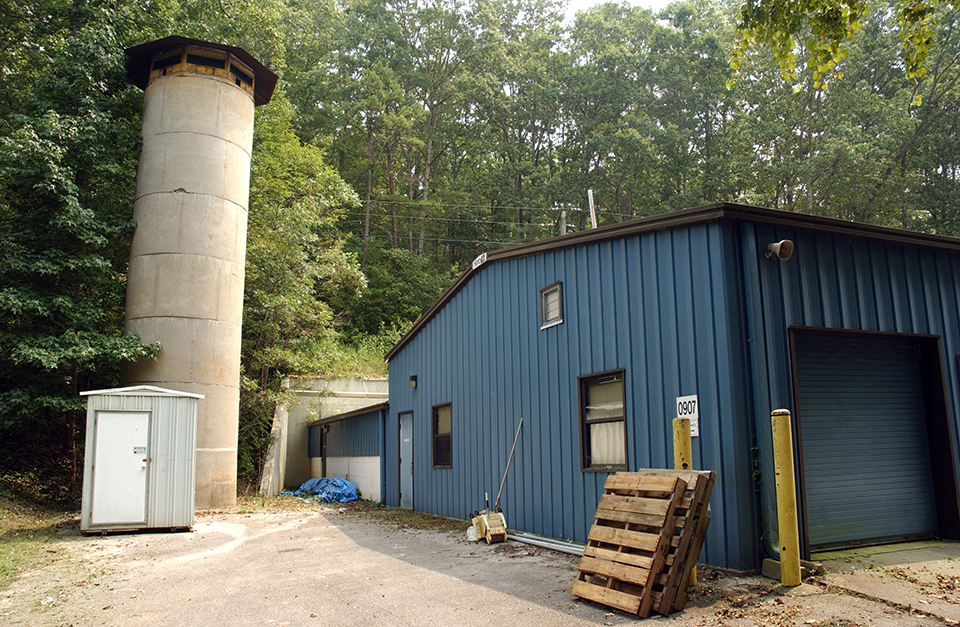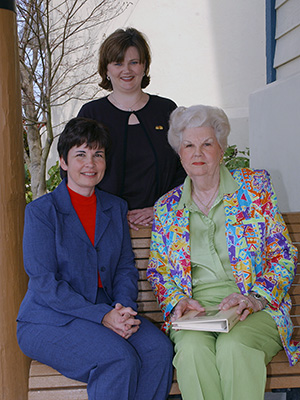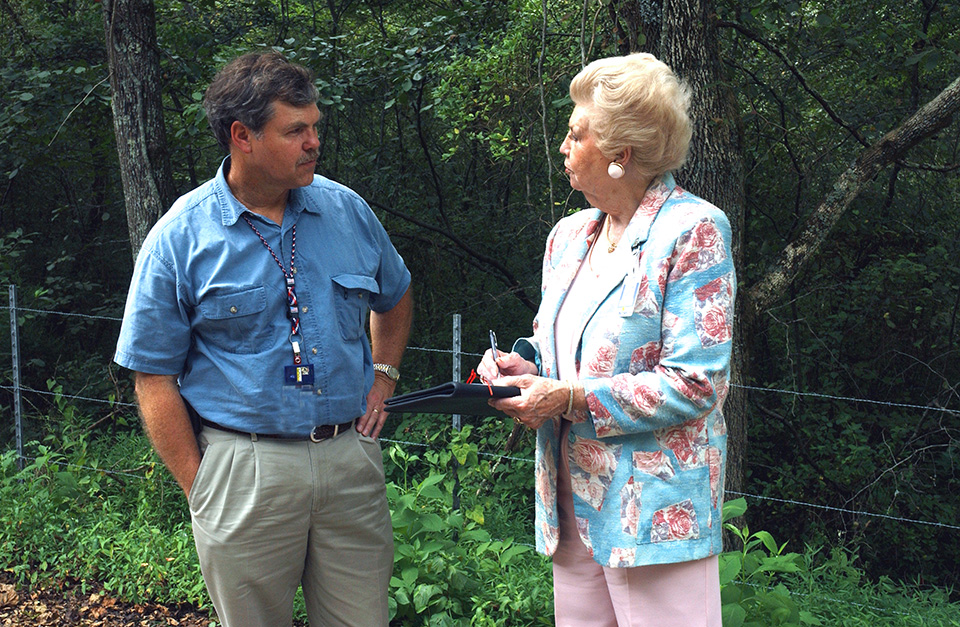
Installation Dog was a Y‑12 uranium storage facility from May 1948 to May 1949 that was disguised as a silo (shown above) and a barn. The area later became known as Katy’s Kitchen and now is part of the Oak Ridge National Laboratory.
In the article below, writer Amy A. shares details about working on a 2004 Y‑12 cookbook.
As a Y‑12 employee, I’ve experienced a number of blessings in my 30‑plus years, but one of the most memorable happened in 2004 while working on Katy’s Kitchen: Y‑12 Secret Recipes. This cookbook was funded by Y‑12’s managing and operating contractor with proceeds going to Y‑12’s United Way Campaign.
The title for the cookbook came from a former Y‑12 storage facility used from May 1948 to May 1949. First known by the code name “Installation Dog,” and designated as Building 9214, the original purpose of the facility, which was located on the Oak Ridge National Laboratory (ORNL) site, was to house enriched uranium after World War II.

Y‑12ers Elaine W. (left) and Amy A. (center) met Kathryn Odom Howard in April 2005 to share the Katy’s Kitchen: Y‑12 Secret Recipes cookbook.
History buffs Mick Wiest and Ray Smith, both Y‑12 employees at the time, had shared with me how the secure building came to be built by Luther Agee. According to the historians, Agee never knew how or why he was chosen to design the structure, but he was told Installation Dog would be a secure building and would store bomb‑grade uranium. When built, Installation Dog was disguised as a barn and silo to camouflage it in East Tennessee’s rural farming landscape. Before completion of Installation Dog, Building 9213, an uncamouflaged facility located on the Y‑12 site, was used for storing the uranium.
In my research, I learned how Installation Dog was renamed Katy’s Kitchen after Kathryn Odom Howard in the late 1950s. During Howard’s time at X‑10 (what ORNL was referred to then), the three Oak Ridge sites (K‑25, X‑10, and Y‑12) were under one contractor. Her organization, Analytical Chemistry, was located there, and Howard often had lunch there. The group decided to nickname the facility “Katy’s Kitchen,” and the name stuck.
Working on the cookbook gave me a behind‑the‑scenes look at Y‑12’s history, offered the opportunity to work with a great crew of people, and allowed me to meet the namesake of Katy’s Kitchen.
After the cookbook was published in 2004, someone connected me with “Miss Katy.” Wiest (who worked with Y‑12 Environment, Safety, and Health then) took Miss Katy on a tour of her old work location.
“It looks so different. It brings back memories … some very good ones,” she said in an interview after the tour. Wiest coordinated the tour with an ORNL employee who said he was glad to meet the namesake of his workplace and told Miss Katy, “I thought you were a myth!” (Before coming to Y‑12, I worked at ORNL for 10 years and had never heard of Katy’s Kitchen.) Miss Katy became a friend to me and attended my wedding in 2006.
While Miss Katy didn’t have a direct Y‑12 tie, she indirectly did through the renaming of a facility. In mid‑April, I found out her great, great nephew, Griffin W., works at Y‑12. He shared his aunt passed away earlier in the month and knew Miss Katy had many ties to the Oak Ridge Reservation.
Witt said, “Even at 100 years old, she would sit with me and tell me stories for hours about working out there and how much it meant to her that I too was working in Oak Ridge — supporting the mission as she once did.”

Mick Wiest and Kathryn Odom Howard visit Katy’s Kitchen in August 2005.
Little did I know when I took on a United Way Campaign project I would experience Y‑12 history with three greats, Wiest (who passed away in 2024), Smith, and Howard.
As Smith said to me in 2004, “We can be proud of the heritage of our Y‑12 history and one of the many interesting stories associated with structures that were part of the tremendous Manhattan Project that helped win both World War II and the Cold War!”